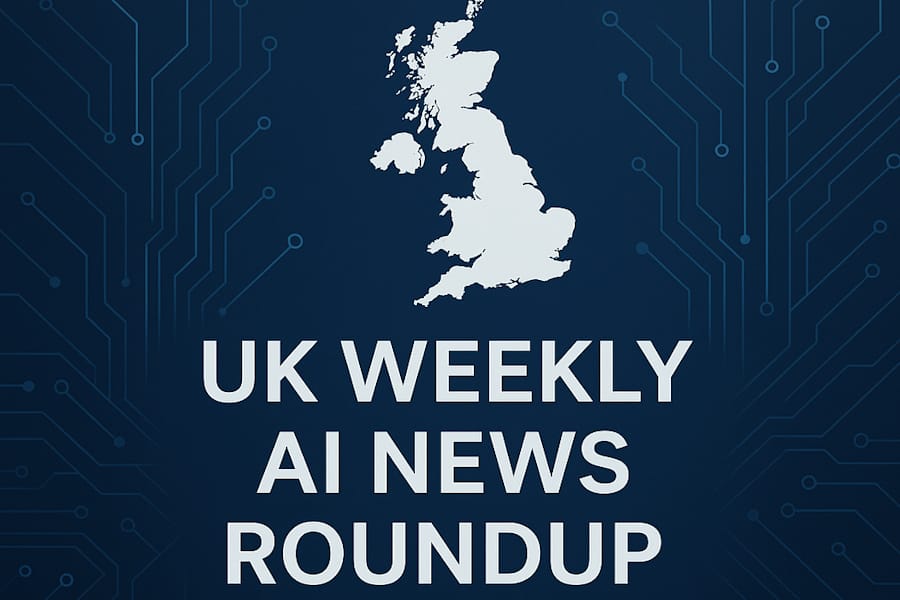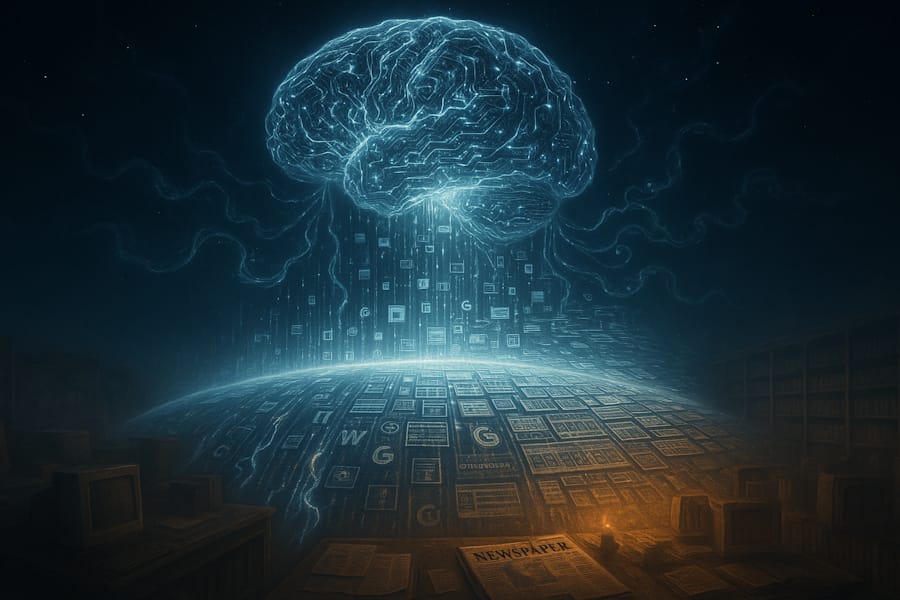MIT Report Highlights Generative AI's Transformative Potential for Enterprises

Publish Date: Last Updated: 1st June 2025
Author: nick smith - With the help of GROK3
May 15, 2025 – A groundbreaking report from MIT Technology Review Insights, titled "The Great Acceleration: CIO Perspectives on Generative AI," underscores the seismic shift generative artificial intelligence (AI) is bringing to enterprises worldwide. Sponsored by Databricks, the report draws on interviews with seven senior executives and experts conducted in April and May 2023, alongside a 2022 global survey of 600 senior data and technology executives. It paints a vivid picture of how generative AI, powered by large language models (LLMs), is democratizing AI adoption, unlocking new business value, and reshaping enterprise strategies.
What the Report Covers
The report explores how chief information officers (CIOs) and technology leaders are integrating generative AI tools into enterprise-wide strategies. Unlike earlier AI applications limited to specific use cases, generative AI is poised to permeate every business function, from marketing to manufacturing. The report highlights:
-
Democratization of AI: Generative AI tools, such as ChatGPT, are making AI accessible across organizations, shifting from pilot projects to a core capability. The report notes a significant "demand pull" from business units, with 94% of surveyed organizations already using AI in 2022, though only 14% aimed for enterprise-wide adoption by 2025. Generative AI is accelerating this ambition.
-
Unlocking Unstructured Data: LLMs can process previously inaccessible unstructured data, such as legacy documents or proprietary files, enabling new applications like predictive maintenance at DuPont and unified documentation at Shell.
-
Data Infrastructure Evolution: Enterprises are adopting flexible architectures like data lakehouses, which combine the scalability of data lakes with the governance of data warehouses. This supports real-time analytics and AI workloads, as seen in Shell’s management of 4 trillion rows of data for predictive maintenance.
-
Open-Source and Custom Models: Concerns over intellectual property (IP) protection and reliance on third-party platforms are driving organizations like DuPont to develop internal LLMs. Open-source models like Databricks’ Dolly, trained for under $30, offer cost-effective alternatives to proprietary systems.
-
Workforce Impact: While generative AI could automate 40% of working hours across industries, CIOs remain optimistic, viewing AI as a "copilot" that enhances productivity rather than replaces jobs. At Adobe, AI tools like Firefly augment creative workflows, allowing employees to focus on high-value tasks.
-
Governance Challenges: The report emphasizes the need for robust AI governance to address risks like IP leakage, bias, and unreliable outputs. Companies like Shell and the VA are investing in centralized governance frameworks to ensure security and compliance.
Key Industry Impacts
The report projects generative AI’s economic impact to be staggering, with McKinsey estimating an annual value addition of $2.6 to $4.4 trillion globally, boosting AI’s overall economic contribution by 15 to 40%. Goldman Sachs forecasts a 7% increase in global GDP, with two-thirds of U.S. occupations affected by AI-driven automation. These projections signal a transformative era for industries, with specific applications already emerging:
-
Consumer Goods and Retail: Virtual fitting rooms and optimized inventory planning.
-
Media and Entertainment: Personalized content curation and interactive storytelling.
-
Manufacturing: Conversational machine interactions and predictive maintenance.
-
Financial Services: Fraud detection and accelerated underwriting.
-
Healthcare: The VA’s AI model improved patient risk prediction, reducing mortality rates, while automation alleviates staff fatigue.
The Future of AI According to the Report
The report envisions generative AI as a catalyst for enterprise-wide adoption, moving beyond niche applications to define the modern enterprise. CIOs like Adobe’s Cynthia Stoddard see AI evolving into an intuitive assistant, transforming human-computer interactions. The future hinges on:
-
Smaller, Specialized Models: Experts like Michael Carbin of MIT and MosaicML predict a shift toward smaller, domain-specific LLMs that are more cost-effective and tailored to organizational needs, as exemplified by Databricks’ Dolly and Meta’s LLaMA-based Alpaca.
-
Data as a Competitive Edge: Matei Zaharia of Databricks emphasizes that internal data will become a “competitive moat,” with companies customizing models to leverage proprietary datasets.
-
Governance and Trust: Unified governance frameworks, like those at the VA, will be critical to mitigate risks and build stakeholder trust. Innovations like Anthropic’s Constitutional AI could guide models to adhere to ethical principles.
-
Workforce Evolution: Rather than widespread job losses, the report foresees AI upskilling employees, enabling non-technical staff to engage with data analytics and fostering a self-service culture, as seen at DuPont.
Implications for the AI Industry
The MIT report is a clarion call for the AI industry to adapt to a rapidly evolving landscape. It highlights opportunities for innovation in open-source platforms, data infrastructure, and governance tools, while underscoring the risks of inaction. Companies that fail to embrace AI, as noted by Cosmo Energy Holdings’ Noriko Rzonca, risk obsolescence within the next decade. The report’s emphasis on cost-efficient models like Dolly could spur competition, challenging the dominance of tech giants like OpenAI and Microsoft.
For startups and established players, the report signals a growing market for specialized AI solutions tailored to industries like healthcare and manufacturing. It also reinforces the importance of partnerships, as seen with Databricks’ role in enabling data-driven AI strategies. However, the industry must address governance and ethical concerns to maintain public trust, especially as regulations like the EU’s AI Act take shape.
Conclusion
MIT’s report marks generative AI as a pivotal force in the enterprise, heralding an era of unprecedented productivity and innovation. By democratizing AI, unlocking data, and fostering strategic adoption, it offers a roadmap for organizations to navigate this transformative technology. For the AI industry, the report is both a blueprint and a challenge: to deliver accessible, secure, and ethical solutions that empower enterprises to thrive in the great acceleration. Get the full paper.
AI News Articles
AI Questions and Answers section for MIT Report Generative AI Enterprise Transformation
Welcome to a new feature where you can interact with our AI called Jeannie. You can ask her anything relating to this article. If this feature is available, you should see a small genie lamp in the bottom right of the page. Click on the lamp to start a chat or view the following questions that Jeannie has answered relating to MIT Report Generative AI Enterprise Transformation.
Be the first to ask our Jeannie AI a question about this article
Look for the gold latern at the bottom right of your screen and click on it to enable Jeannie AI Chat.











